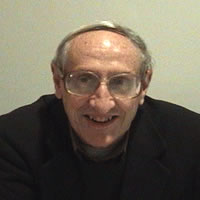Dr. Allan M. Collins
The MIT Technology Review article An Emotional Cat Robot: Robots might behave more efficiently if they had emotions said
“Scientists in the Netherlands are endowing a robotic cat with a set of logical rules for emotions. They believe that by introducing emotional variables to the decision-making process, they should be able to create more-natural human and computer interactions.‘We don’t really believe that computers can have emotions, but we see that emotions have a certain function in human practical reasoning,’ says Mehdi Dastani, an artificial-intelligence researcher at Utrecht University, in the Netherlands. By bestowing intelligent agents with similar emotions, researchers hope that robots can then emulate this human-like reasoning, he says.
Dastani’s emotional functions have been derived from a psychological model known as the OCC model, devised in 1988 by a trio of psychologists: Andrew Ortony and Allan Collins, of Northwestern University, and Gerald Clore, of the University of Virginia. ‘Different psychologists have come up with different sets of emotions,’ says Dastani. But his group decided to use this particular model because it specified emotions in terms of objects, actions, and events.”
Allan M. Collins, Ph.D., FAAAI is Professor Emeritus of Education and Social Policy at Northwestern University. He is a member of the National Academy of Education, a fellow of the American Association for Artificial Intelligence, and served as a founding editor of the journal Cognitive Science and as first chair of the Cognitive Science Society. He has studied teaching and learning for over 30 years, and written extensively on related topics.
Allan is best known in psychology for his work on how people answer questions, in artificial intelligence for his work on reasoning and intelligent tutoring systems, and in education for his work on situated learning, inquiry teaching and cognitive apprenticeship. From 1991 to 1994 he was Co-Director of the US Department of Education’s Center for Technology in Education. Recently he was chosen by French psychologists as one of 30 living scholars who have had the most impact on the field of psychology.
Allan has recently completed a book with Rich Halverson, Rethinking Education in the Age of Technology: The Digital Revolution and the Schools. The book argues that the world of education is currently engaged in a massive transformation, as a result of the information revolution. The book describes this transformation by comparing current events with the 19th century shift from an agricultural society to an industrial society that precipitated the transition from apprenticeship to universal schooling. It shows how the seeds of a new education system are found in the explosion of new technology-driven learning options, such as home schooling, workplace learning, distance education, learning and technology centers, adult education, computer learning environments, education television and videos, technical certification, and internet cafes, all of which are severing the connection of schooling and learning that has long dominated education. The book will be published by Allyn Bacon Longman.
He coauthored The Logic Of Plausible Reasoning: A Core Theory, The Role of Different Media in Designing Learning Environments, Situated Cognition and the Culture of Learning, A Spreading-Activation Theory of Semantic Processing, Cognition and learning, Learning communities in classrooms: A reconceptualization of educational practice, Retrieval time from semantic memory, Design research: Theoretical and methodological issues, Plausible Generalization: Extending a Model of Human Plausible Reasoning, Mixed-Initiative Systems for Training and Decision-Aid Applications, and Improving Interactive Capabilities in Computer-Assisted Instruction.
Allan earned his MA in Communication Sciences in 1961 from the University of Michigan and his PhD in Cognitive Psychology in 1970 from the University of Michigan. Watch Design-based Research: Reflections on the Past and the Future where he discusses the origins, defining principals, and major issues of design experiments, and how it has evolved over the years.
